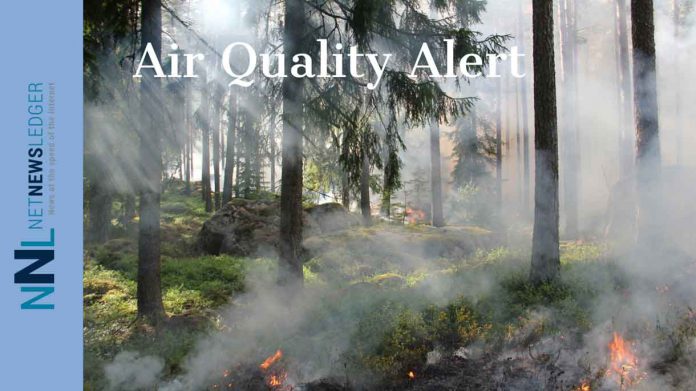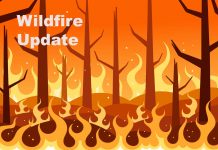The Emergence of High Levels of Air Pollution
THUNDER BAY – WEATHER – At 7:00 PM EDT Environment Canada has issued an air quality alert due to the presence of smoke from forest fires in northwestern Ontario, high levels of air pollution have developed. Smoke plumes from these fires are expected to affect the area into the night and persist into the weekend for some regions, causing a deterioration in air quality.
For Thunder Bay, the forecast is calling for rain on Saturday. Environment Canada reports, Saturday will see periods of rain along with local smoke. Amounts of precipitation during the day will be about 5 to 10 mm. Wind becoming east 20 km/h early in the afternoon.
Saturday evening will see continued periods of rain along with local smoke. Further precipitation amounts of 10 to 15 mm are forecast..
The visibility and air quality can vary significantly due to the wildfire smoke and these conditions can change over short distances and fluctuate from hour to hour.
For comprehensive details, please refer to the Environment Canada website.
The Health Risks of Wildfire Smoke
Wildfire smoke poses a potential health risk to everyone, even at low concentrations. It is critical to take measures to minimize exposure to this hazardous smoke.
Vulnerable Populations
People with pre-existing lung diseases such as asthma or heart diseases, older adults, children, pregnant individuals, and outdoor workers are particularly susceptible to the health effects of wildfire smoke. Consulting with your healthcare provider to develop a comprehensive management plan for dealing with wildfire smoke events is advised. Also, ensure that you have an ample supply of necessary medications at home and carry them with you at all times during the wildfire season.
Responding to Discomfort and Seeking Professional Help
If you or someone under your care experiences breathing discomfort or feelings of illness, it is recommended to reduce or halt physical activity. Reach out to your healthcare provider or local health authority for advice or if severe symptoms develop.
Monitoring Air Quality and Symptoms
It is important to regularly check the Air Quality Health Index (AQHI) and closely monitor your symptoms. Individuals may respond differently to smoke exposure. Mild irritation and discomfort are common but usually subside once the smoke clears. Staying hydrated by consuming plenty of water can help the body cope with the effects of smoke.
Indoor Precautions and Protective Measures
If your home is equipped with an HVAC system, use the highest rated MERV filter suitable for your system, ideally with a rating of 13 or higher. Keep the fan set to recirculate air constantly. Consider utilizing a portable High Efficiency Particulate Air (HEPA) air cleaner for additional protection. Ensure doors and windows remain closed if the indoor temperature is comfortable.
Seeking Clean Air and Protective Measures
Take breaks from the smoke by finding locations within your community where clean and cool air is accessible. If spending time outdoors becomes necessary, utilize a well-fitted respirator-type mask, such as a NIOSH certified N95 or equivalent respirator, to reduce exposure to fine particles in the smoke. However, note that respirators do not provide protection against the gases present in wildfire smoke. Pay attention to your body and decrease or cease activities if any symptoms arise.
Supporting Vulnerable Individuals
Remember to check on individuals under your care and others around you who may be more susceptible to the effects of smoke. Offer assistance and support as needed.
Reducing Indoor Air Pollution
To minimize indoor air pollution, avoid smoking or vaping indoors, burning incense and candles, frying foods, using wood stoves, and vacuuming. During pollution episodes, wipe and wet mop indoor surfaces to remove dust particles.
Mental Health Support
If you experience feelings of stress, anxiety, or depression due to the current situation, seek advice from your mental health care provider or visit Wellness Together for additional resources and support.







